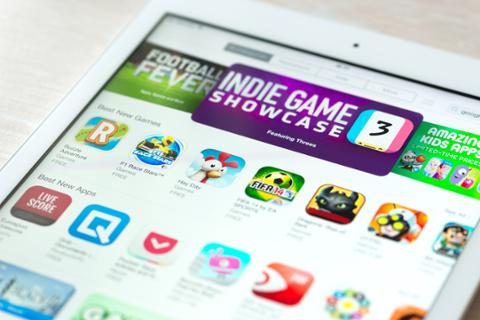 Which monetization strategy is right for you?[/caption] App subscriptions have caught on in a big way. This is driven in large part by monetization, but even so, there’s no clear path forward for developers. A few apps demonstrate why a subscription is not always the best model to embrace by developers who want to build an audience and get paid. Take the case of developer Lightricks’s sophomore effort, Enlight Photofox, which was set as a crowd-pleasing follow-up to the original, which let users edit photos on mobile devices. Photofox lived up to expectations, adding the ability to superimpose images and advanced layering; like its predecessor, it’s free to download. But unlike the original, advanced features aren’t purchasable. Instead, Photofox uses a subscription model dubbed ‘Pro’: users can either buy Photofox Pro for a one-time fee of $39.99, or subscribe monthly for $3.99. There’s also an annual subscription for $19.99. The app is having trouble finding favor with users, though. Its review section appears to be a war between those rating it five stars based on its merit, and those giving it one star based on their disdain for the new subscription pricing. To its credit, Lightricks is responding to one-star reviews in the App Store. In a retort to one unhappy user, Lightricks admitted this was a business decision:
Which monetization strategy is right for you?[/caption] App subscriptions have caught on in a big way. This is driven in large part by monetization, but even so, there’s no clear path forward for developers. A few apps demonstrate why a subscription is not always the best model to embrace by developers who want to build an audience and get paid. Take the case of developer Lightricks’s sophomore effort, Enlight Photofox, which was set as a crowd-pleasing follow-up to the original, which let users edit photos on mobile devices. Photofox lived up to expectations, adding the ability to superimpose images and advanced layering; like its predecessor, it’s free to download. But unlike the original, advanced features aren’t purchasable. Instead, Photofox uses a subscription model dubbed ‘Pro’: users can either buy Photofox Pro for a one-time fee of $39.99, or subscribe monthly for $3.99. There’s also an annual subscription for $19.99. The app is having trouble finding favor with users, though. Its review section appears to be a war between those rating it five stars based on its merit, and those giving it one star based on their disdain for the new subscription pricing. To its credit, Lightricks is responding to one-star reviews in the App Store. In a retort to one unhappy user, Lightricks admitted this was a business decision:
To be completely transparent, our previous flat rate of $3.99 was simply not sustainable for our company to stay in business. Our monthly subscription is equal to purchasing a cup of coffee once a month, and our flat rate is equal to purchasing a PC or console game, which is surely a price worth spending on a hobby you truly enjoy. If you are not interested in paying at all, we encourage you to still use the free version of the app.[caption id="attachment_138519" align="aligncenter" width="1360"]
 Mac App Store WWDC 2016[/caption] This is a sentiment echoed by the creator of Things 3. At WWDC, I challenged the team on why its cross-platform pricing was upwards of $80 (iPhone, iPad and macOS apps). The creators told me they were more interested in having dedicated users than casual ones, and pricing the apps as they did helped ensure that. Sure enough, the $9.99 iOS app has 2,147 ratings on the back of 342 reviews, and enjoys a five-star overall rating. Leading security service 1Password is also under the microscope. The company is edging toward a subscription-only model, and some security experts are upset.
Mac App Store WWDC 2016[/caption] This is a sentiment echoed by the creator of Things 3. At WWDC, I challenged the team on why its cross-platform pricing was upwards of $80 (iPhone, iPad and macOS apps). The creators told me they were more interested in having dedicated users than casual ones, and pricing the apps as they did helped ensure that. Sure enough, the $9.99 iOS app has 2,147 ratings on the back of 342 reviews, and enjoys a five-star overall rating. Leading security service 1Password is also under the microscope. The company is edging toward a subscription-only model, and some security experts are upset.
Unfortunately, @1Password is betraying their users and moving to a subscription-only service. This is unfortunate. We cannot recommend them.
— Crypto Village (@CryptoVillage) July 10, 2017
1Password says it’s not dropping licensing altogether, but would rather customers converse with the company before requesting a license to “help them determine if a license is really what's best for them.” Although experts are concerned about this use of a subscription model, 1Password has been open about its security practices, and all transmissions are end-to-end encrypted. If a hacker were to somehow pull metadata from your 1Password vault, it would be impossible to decipher. It also has features like Watchtower, which monitors the lifespan of your passwords to ensure you’re changing them regularly, as well as a password generator that can be easily customized to suit your needs. This mild controversy isn't affecting 1Password’s reputation, either. In the App Store, it enjoys a 4.5 star rating with 365 reviews, mostly five-star. Now free, 1Password (whether explicitly or not) is forcing users into its cloud and subscription model.1Password's decision to sunset local credential storage for a 3rd-party cloud model alienates its most vocal allies — security professionals
— Kenn White (@kennwhite) July 10, 2017
 Not all services or apps are comparable, and in some way these three are representative of that. We also can’t say there’s a lot of overlap in the Venn diagram between users of these apps. Subscriptions don’t work for everyone, though, and neither will upfront pricing. It’s clear that the subscription monetization model has its place. Before asking for a “cup of coffee” each month, 1Password was as expensive on sale as Things 3 is at regular price. Users gladly paid for it. The creators of Things 3 also tell me they’re exploring a subscription model, but aren’t yet sure it makes total sense for them. Enlight has a tougher climb. You could say it broke ground on subscription photo editing apps, but the blowback may see it remain solo in that effort. The solution may be as simple as cutting its pricing in half; $2 each month for photo editing can develop a longer tail than $4 or more, and will cause less users to reconsider the spend. The takeaway? Not all apps or services are well-served by the subscription model. It has upside, and being betrothed to ‘power users’ may make you a better developer, but a bit of objectivity and market analysis will help you decide which monetization strategy is right for you.
Not all services or apps are comparable, and in some way these three are representative of that. We also can’t say there’s a lot of overlap in the Venn diagram between users of these apps. Subscriptions don’t work for everyone, though, and neither will upfront pricing. It’s clear that the subscription monetization model has its place. Before asking for a “cup of coffee” each month, 1Password was as expensive on sale as Things 3 is at regular price. Users gladly paid for it. The creators of Things 3 also tell me they’re exploring a subscription model, but aren’t yet sure it makes total sense for them. Enlight has a tougher climb. You could say it broke ground on subscription photo editing apps, but the blowback may see it remain solo in that effort. The solution may be as simple as cutting its pricing in half; $2 each month for photo editing can develop a longer tail than $4 or more, and will cause less users to reconsider the spend. The takeaway? Not all apps or services are well-served by the subscription model. It has upside, and being betrothed to ‘power users’ may make you a better developer, but a bit of objectivity and market analysis will help you decide which monetization strategy is right for you. 

